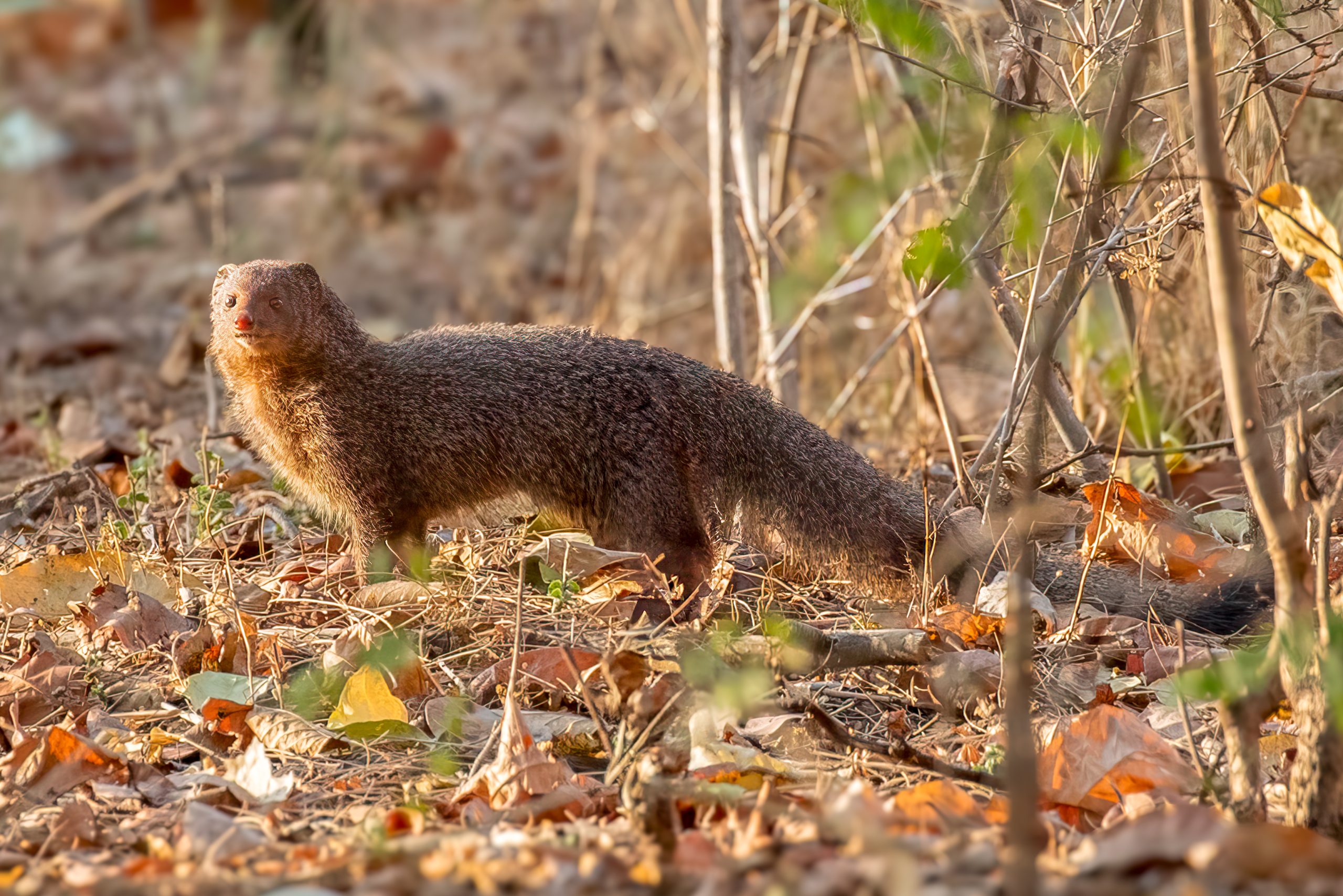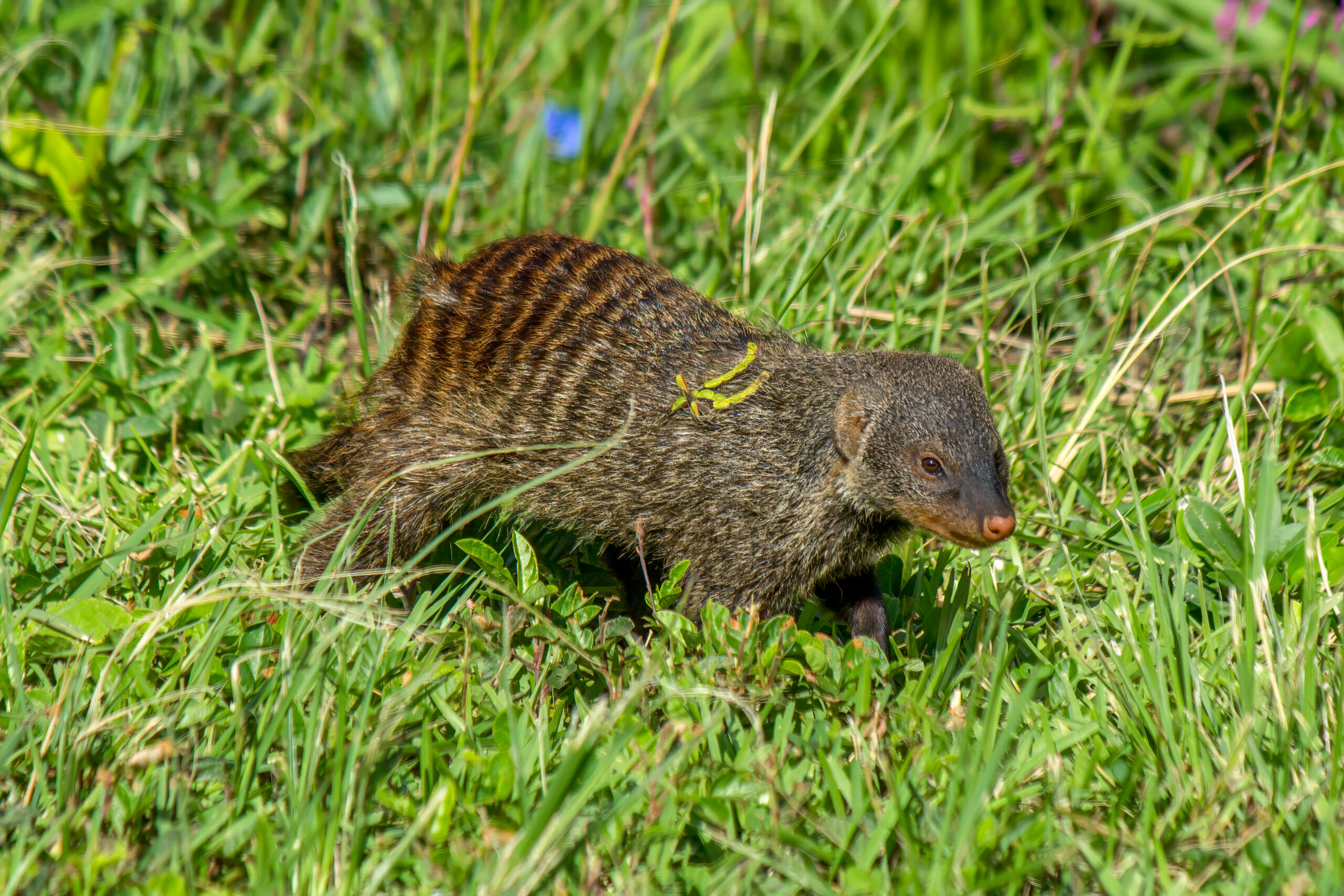Description
The slender mongoose (Herpestes sanguineus), also called black-tipped mongoose or black-tailed mongoose, is a lithe little carnivore common throughout sub-Saharan Africa. Color varies extensively between subspecies, and it can be everything from chestnut, brown, grey, reddish, orange red and yellow. All-white albinos have also been observed. The length of the body is between 27.5-40 cm (11-16 in), and the telltale long black-tipped tail measures 23-33 cm (9-13 in). When running fast, the tail is often seen extended upwards. Males reach a weight of 640-715 g (22-25 oz), while females are smaller at 450-575 g (16-20 oz).
Habitat, diet & feeding habits
It is found in most habitats but prefers savannah and semiarid grassland and is rare in deserts and dense forests. It seems to thrive in sand forests as I have seen through my own research. The slender mongoose is mostly active during the day, though it may occasionally hunt during warm moonlit nights. Their main diet is insects, but they do also eat small rodents, lizards, snakes, amphibians, carrion and even fruit. Being one of the few mongoose species adept at climbing, they also climb trees to capture birds and feed on eggs in nests. Mongooses are famous for being able to capture and eat venomous snakes, and slender mongoose is no exception, though it is not common.
Behavior & reproduction
The slender mongoose prefers to live a solitary life, though it does sometimes live in pairs. It dens in burrows, in between rocks, in trees, and logs, anywhere that will give some form of shelter from weather and wind. Since many related mongoose species are nocturnal, slender mongooses often share dens with them as they will use them at different hours. A male slender mongoose will share a territory with several females with whom he will mate when they are ready. Gestation period is 60-70 days, and a litter is often 1-3 young.
Status
The slender mongoose is listed as least concern by the IUCN Red List. It is an extremely adaptable species, with 50 subspecies spread throughout sub-Saharan Africa. The black mongoose (Herpestes flavescens) in Namibia is often considered a separate species. In the past it was targeted as a carrier of rabies, and in some areas, humans did try to exterminate them, to little success.









